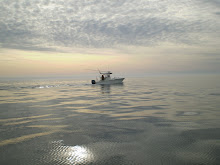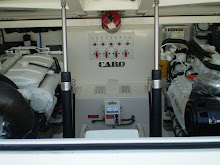Question for the Crew: Where do you know this text from?
AMZ152-154-191515-
S OF OREGON INLET TO CAPE HATTERAS NC OUT 20 NM-
S OF CAPE HATTERAS TO OCRACOKE INLET NC OUT 20 NM
INCLUDING THE MONITOR NATIONAL MARINE SANCTUARY-
1014 PM EST THU FEB 18 2010
SMALL CRAFT ADVISORY IN EFFECT UNTIL 9 AM EST FRIDAY
OVERNIGHT
NW WINDS 20 TO 25 KT. SEAS 3 TO 5 FT. DOMINANT PERIOD
6 SECONDS.
FRI
NW WINDS 15 TO 20 KT. SEAS 3 TO 5 FT DOMINANT PERIOD
4 SECONDS.
ETC......
 The answer, of course, is the sea/weather forecast for Diamond Shoals buoy off Hatteras, NC. What's always caught my eye and imagination in particular, however, when reading the forecasts, being that I'm a naval and Civil War aficionado, is that the area covered encompasses the "Monitor National Marine Sanctuary," i.e., the site where the ironclad USS Monitor foundered and sank, entombing some of its crew in a steel coffin.
The answer, of course, is the sea/weather forecast for Diamond Shoals buoy off Hatteras, NC. What's always caught my eye and imagination in particular, however, when reading the forecasts, being that I'm a naval and Civil War aficionado, is that the area covered encompasses the "Monitor National Marine Sanctuary," i.e., the site where the ironclad USS Monitor foundered and sank, entombing some of its crew in a steel coffin. During our many trips traversing this area of open ocean, we've probably passed close to the Monitor site--perhaps passed right over the top of it--without ever taking notice. We know it's there, but we don't think about it. And not thinking about it, we don't know of its circumstances--how it came to find it's way there, to disappear from the surface, plunging downward into the silent depths.
Given our love for this area--it's special meaning in our lives--I thought it would be interesting to find out about her last day and moments, and why she sank where she did. Did it happen at night, or day? Did a storm bring her down, or some freak accident in a calm sea? Perhaps if we know her story, we'll appreciate this little chunk of the planet that much more. Perhaps it will be a fitting way to honor the memory of her unfortunate crew. The narrative goes like this:
USS Monitor--Loss of the Ship, 31 December 1862
After a hot summer of routine duty in the Hampton Roads area, Monitor badly needed an overhaul. This work, done at the Navy Yard in Washington, D.C., fitted the ship with a telescopic smokestack, improved ventilation, davits for handling her boats and a variety of other changes to enhance her fighting power and habitability. She returned to the combat zone in November 1862, remaining in vicinity of Newport News for the rest of that month and nearly through the next.
 In December, Monitor was ordered south to join the blockading forces off the Carolinas. After preparing for sea, on 29 December she left Hampton Roads in tow of USS Rhode Island, bound for Beaufort, N.C. The weather, expected to be good for the entire voyage, stayed that way into the 30th, as the two ships moved slowly along, several miles off the North Carolina coast. However, wind and seas picked up during the afternoon and turned to a gale by evening. The Monitor labored heavily as she neared Cape Hatteras, famous for its nasty sea conditions. Water began to enter the ship faster than the pumps could expel it and conditions on board deteriorated dangerously.
In December, Monitor was ordered south to join the blockading forces off the Carolinas. After preparing for sea, on 29 December she left Hampton Roads in tow of USS Rhode Island, bound for Beaufort, N.C. The weather, expected to be good for the entire voyage, stayed that way into the 30th, as the two ships moved slowly along, several miles off the North Carolina coast. However, wind and seas picked up during the afternoon and turned to a gale by evening. The Monitor labored heavily as she neared Cape Hatteras, famous for its nasty sea conditions. Water began to enter the ship faster than the pumps could expel it and conditions on board deteriorated dangerously.Shortly before midnight, it was clear that Monitor was in grave danger. Her steam pressure was fast failing as rising water drowned the boiler fires. The tow line was cut, the anchor dropped, and distress signals were sent to the Rhode Island. Boats managed to remove most of the ironclad's crewmen under extremely difficult conditions, but several men were swept away. Finally, at about 1:30 in the morning of 31 December 1862, the historic Monitor sank, to be lost to human sight for nearly 112 years. Sixteen of her crew of sixty-two were lost with her.
Here are some amazing photographs of the Monitor's grave. Obviously, sea conditions must have been very benign on the day of this visit.
Overview of the hull

The circular turret

The bow section

A stunning mosaic










No comments:
Post a Comment